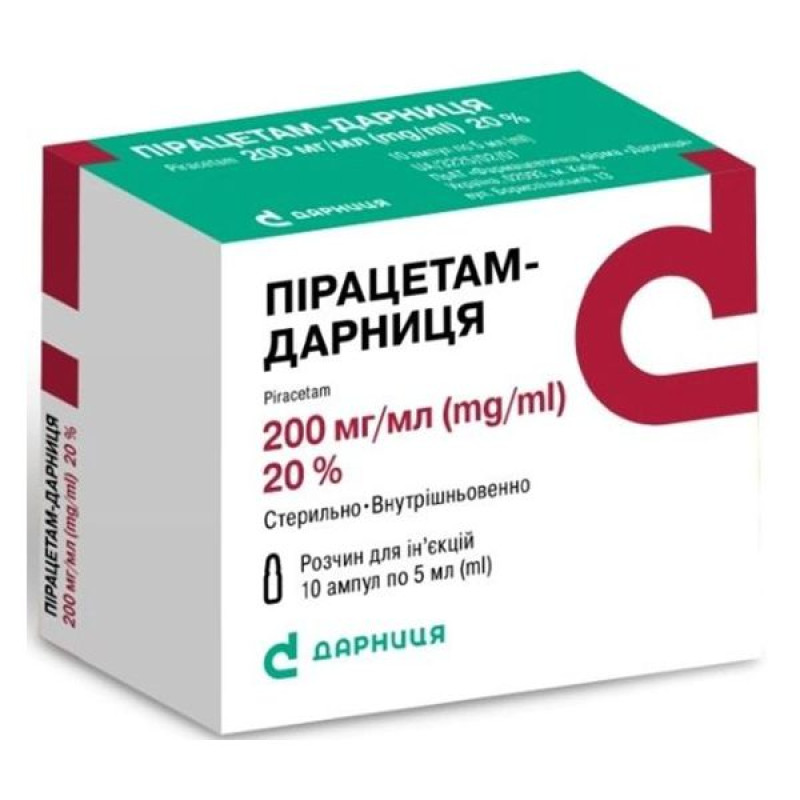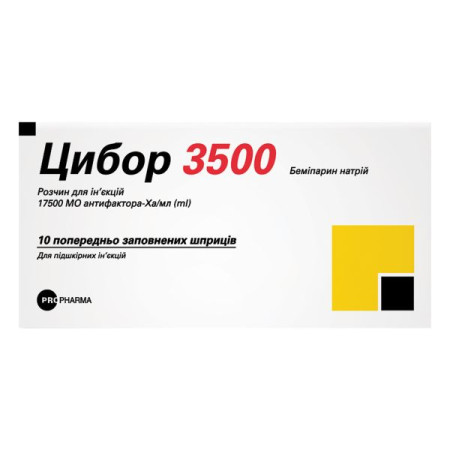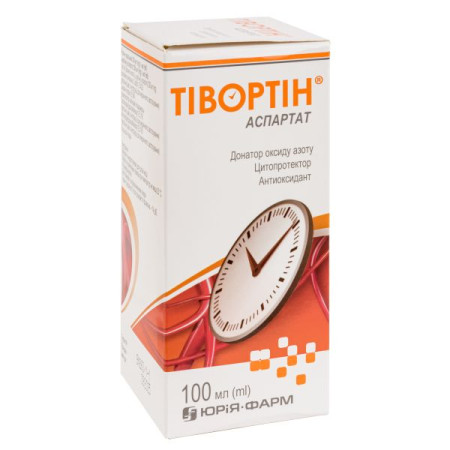Piracetam solution for injection 20% ampoule 5 ml No. 10

Instructions Piracetam solution for injection 20% ampoule 5 ml No. 10
Composition
active ingredient: piracetam;
1 ml of solution contains piracetam 200 mg;
Excipients: sodium acetate trihydrate, glacial acetic acid, water for injections.
Dosage form
Solution for injection.
Main physicochemical properties: clear colorless liquid.
Pharmacotherapeutic group
Psychostimulants and nootropics.
ATX code N06B X03.
Pharmacological properties
Pharmacodynamics
The active ingredient of the drug is piracetam, a cyclic derivative of gamma-aminobutyric acid.
Piracetam is a nootropic that acts on the brain, improving cognitive functions such as learning ability, memory, attention, and mental performance. There are probably several mechanisms of action of the drug on the central nervous system: changing the speed of propagation of excitation in the brain; enhancing metabolic processes in nerve cells; improving microcirculation by affecting the rheological characteristics of the blood without causing a vasodilator effect. Improves connections between the cerebral hemispheres and synaptic conduction in neocortical structures. Piracetam inhibits platelet aggregation and restores the elasticity of the erythrocyte membrane, reduces erythrocyte adhesion. At a dose of 9.6 g, it reduces the level of fibrinogen and von Willebrand factors by 30-40% and prolongs bleeding time. Piracetam has a protective and restorative effect in impaired brain function due to hypoxia, intoxication and electroshock therapy. Piracetam reduces the severity and duration of vestibular nystagmus.
Piracetam should be used as monotherapy or in the complex treatment of cortical myoclonus, as a means to reduce the severity of the provoking factor - vestibular neuronitis.
Pharmacokinetics
Cmax after administration of 2 g of the drug is reached in blood plasma after 30 minutes, and in cerebrospinal fluid - within 2-8 hours and is 40-60 μg / ml. The volume of distribution of piracetam is almost 0.6 l / kg. The half-life of the drug from blood plasma is 4-5 hours and, respectively, 6-8 hours from cerebrospinal fluid. This period may be prolonged in renal failure. It does not bind to blood plasma proteins, is not metabolized in the body. 80-100% of piracetam is excreted by the kidneys unchanged by glomerular filtration. Renal clearance of piracetam in healthy volunteers is 86 ml / min. The pharmacokinetics of piracetam does not change in patients with hepatic failure. Piracetam penetrates the blood-brain barrier, placental barrier and membranes used in hemodialysis. In animal studies, it was found that piracetam selectively accumulates in the tissues of the cerebral cortex, mainly in the frontal, parietal and occipital zones, the cerebellum and basal ganglia.
Indication
Adults:
- symptomatic treatment of pathological conditions accompanied by memory impairment, cognitive disorders, with the exception of diagnosed dementia;
- treatment of cortical myoclonus, as monotherapy or as part of complex therapy.
Contraindication
Hypersensitivity to piracetam or pyrrolidone derivatives, as well as to other components of the drug.
Acute cerebrovascular accident (hemorrhagic stroke).
End-stage renal failure.
Huntington's cholera.
Interaction with other medicinal products and other types of interactions
Treatment with piracetam, if necessary, can be combined with the use of cardiovascular drugs. In the treatment of mental illnesses - with appropriate psychotropic drugs.
When used together with thyroid hormones, increased irritability, disorientation, and sleep disturbances are possible.
Acenocoumarol.
Clinical studies have shown that in patients with severe recurrent thrombosis, the use of piracetam in high doses (9.6 g per day) did not affect the dosage of acenocoumarol to achieve a prothrombin time (INR) of 2.5-3.5, but with its simultaneous use, a significant decrease in the level of platelet aggregation, fibrinogen levels, von Willebrand factors (coagulation activity (VIII: C); ristocetin cofactor (VIII: vW: Rco) and plasma protein (VIII: vW: Ag;)), blood and plasma viscosity was observed.
Pharmacokinetic interactions.
The likelihood of changes in the pharmacodynamics of piracetam under the influence of other drugs is low, since 90% of the drug is excreted unchanged in the urine.
In vitro, piracetam does not inhibit cytochrome P450 isoforms CYP1A2, 2B6, 2C8, 2C9, 2C19, 2D6, 2E1 and 4A9/11 at concentrations of 142, 426, 1422 μg/ml.
At a concentration of 1422 μg/ml, a slight inhibition of CYP2A6 (21%) and ZA4/5 (11%) was observed. However, the Ki of these two CYP isomers is sufficient above 1422 μg/ml. Therefore, metabolic interactions with drugs metabolized by these enzymes are unlikely.
Antiepileptic drugs.
The use of piracetam at a dose of 20 g daily for 4 weeks or more did not change the concentration-level curve and maximum concentration (Cmax) of antiepileptic drugs in serum (carbamazepine, phenytoin, phenobarbital, sodium valproate) in patients with epilepsy.
Alcohol.
Co-administration with alcohol did not affect the serum concentration of piracetam, and serum alcohol concentration did not change when 1.6 g of piracetam was taken.
In elderly people, it enhances the effect of antianginal drugs and increases the effectiveness of antidepressants.
Application features
Effect on platelet aggregation.
Due to the fact that piracetam reduces platelet aggregation (see section "Pharmacodynamic properties"), it is necessary to prescribe the drug with caution to patients with impaired hemostasis, conditions that may be accompanied by bleeding (gastrointestinal ulcer), during major surgical operations (including dental interventions), patients with symptoms of severe bleeding or patients with a history of hemorrhagic stroke; patients using anticoagulants, platelet antiaggregants, including low doses of acetylsalicylic acid. The drug is excreted by the kidneys, therefore special attention should be paid to patients with renal failure.
Elderly patients.
During long-term therapy in elderly patients, regular monitoring of renal function is recommended, and if necessary, the dose should be adjusted depending on the results of the creatinine clearance study (see section "Method of administration and dosage"). Penetrates through the filtering membranes of hemodialysis machines.
When treating patients with cortical myoclonus, abrupt discontinuation of treatment should be avoided due to the risk of generalization of myoclonus or the occurrence of seizures.
This medicinal product contains sodium. This should be taken into account by patients on a controlled sodium diet.
Use during pregnancy or breastfeeding
Do not use the drug during pregnancy. The drug passes into breast milk, so if necessary, breastfeeding should be discontinued.
Ability to influence reaction speed when driving vehicles or other mechanisms
Caution should be exercised when driving or operating other machinery due to the possibility of developing adverse reactions from the central nervous system.
Method of administration and doses
The drug in the form of an injectable solution should be used in acute cases or when oral forms of piracetam cannot be used.
The drug should be administered intravenously (inject slowly, over several minutes) or as an infusion (administer continuously for 24 hours).
The medicine is for use by adults.
Treatment of conditions accompanied by memory impairment and cognitive disorders.
The initial daily dose is 4.8 g during the first week of treatment. Usually the dose should be divided into 2-3 administrations. The maintenance dose is 2.4 g per day. Subsequently, a gradual dose reduction of 1.2 g per day is possible.
Treatment of cortical myoclonus.
The initial daily dose is 24 g for 3 days. If during this time the desired therapeutic effect is not achieved, continue using the drug at the same dosage (24 g per day) for up to 7 days. If the desired therapeutic effect is not obtained on the 7th day of treatment, treatment should be discontinued. If the therapeutic effect has been achieved, then starting from the day when a stable improvement is achieved, start reducing the dose of the drug by 1.2 g of piracetam every 2 days until the manifestations of cortical myoclonus reappear. This will make it possible to establish the average effective dose.
Treatment with other antimyoclonic drugs is maintained at the previously prescribed doses. Treatment should be continued until the symptoms of the disease disappear. To prevent deterioration of the patient's condition, the drug should not be abruptly discontinued. The dose should be gradually reduced by 1.2 g of piracetam every 2-3 days. Repeated courses of treatment with the drug should be prescribed every 6 months, adjusting the dose depending on the patient's condition, until the symptoms of the disease disappear or decrease.
Elderly patients.
Dose adjustment is recommended in elderly patients with known or suspected renal impairment (see section "Patients with renal impairment"). During treatment, creatinine clearance should be monitored in order to adjust the dose appropriately in such patients if necessary.
Patients with impaired renal function.
Since the drug is excreted from the body by the kidneys, caution should be exercised when treating patients with renal insufficiency.
The increase in half-life is directly related to the deterioration of renal function and creatinine clearance. This also applies to elderly patients, in whom the rate of creatinine clearance is age-dependent. The interval between administrations should be adjusted based on the degree of decline in renal function.
Dose calculation should be based on an estimate of the patient's creatinine clearance. Calculate using the formula:
| . [140 - age (in years)]x body weight (kg) . | (x 0.85 for women) |
| 72 x plasma creatinine concentration (mg/dL) |
Treatment for such patients should be prescribed depending on the severity of renal failure, adhering to the following recommendations:
| Degree of renal failure | Creatinine clearance (ml/min) | Dosage |
| Normal (no renal failure) | > 80 | Usual dose divided into 2 or 4 administrations |
| Light | 50-79 | 2/3 of the usual dose in 2-3 injections |
| Moderate | 30-49 | 1/3 of the usual dose for 2 injections |
| Severe | < 30 | 1/6 of the usual dose once |
| Terminal stage | – | Contraindicated |
Patients with impaired liver function
No dose adjustment is required for patients with impaired hepatic function. In case of diagnosed or suspected hepatic and renal dysfunction, dose adjustment should be carried out as indicated in the section "Patients with impaired renal function".
Children.
Do not apply.
Overdose
Symptoms: increased side effects of the drug. Symptoms of overdose were observed with oral administration of the drug in a dose of 75 g.
Treatment is symptomatic. There is no specific antidote, hemodialysis can be used (removal of 50-60% of piracetam).
Adverse reactions
Adverse reactions are most often observed in elderly patients at doses above 2-4 g per day.
The frequency is defined as follows: very common (≥ 1/10), common (≥ 1/100 <1/10), uncommon (≥ 1/1000 <1/100), rare (≥ 1/10000 <1/1000), very rare (<1/10000), isolated cases (frequency cannot be estimated from the available data).
| System or organ according to the WHO classification system of organs and systems | Often (≥1/100 to <1/10) | Infrequently (≥1/1000 to <1/100) |
| Nervous system disorders | Hyperkinesia | |
| Metabolic and nutritional disorders | Weight gain | |
| Mental disorders | Nervousness | Depression |
| General disorders and administration site conditions | Asthenia |
Adverse reactions reported during post-marketing surveillance are listed below by organ system.
From the side of the organs of hearing and vestibular apparatus.
Isolated cases: dizziness.
From the gastrointestinal tract.
Isolated cases: abdominal pain, upper abdominal pain, diarrhea, nausea, vomiting.
From the nervous system.
Common: hyperkinesia.
Uncommon: drowsiness.
Isolated cases: ataxia, balance disorders, increased frequency of epileptic seizures, headache, insomnia, tremor.
From the psychological side.
Common: nervousness.
Uncommon: depression.
Isolated cases: increased excitability, anxiety, confusion, hallucinations.
From the cardiovascular system.
Very rare: hypotension, thrombophlebitis.
From the blood and lymphatic system.
Isolated cases: hemorrhagic disorders.
From the immune system.
Isolated cases: hypersensitivity, anaphylactoid reactions.
On the skin and subcutaneous tissue.
Isolated cases: angioedema, dermatitis, rash, urticaria, itching.
On the part of the reproductive system and mammary gland function.
Isolated cases: increased sexual activity.
General disorders and administration site reactions.
Uncommon: asthenia.
Very rare: fever, injection site reactions including itching, pain, hyperemia, and injection site induration.
Research.
Common: weight gain.
Expiration date
3 years.
Storage conditions
Store in the original packaging at a temperature not exceeding 25 ° C. Do not freeze. Keep out of the reach of children.
Incompatibility.
No studies have been conducted. The drug should not be mixed with other drugs.
Incompatible with solutions of acids and alkalis, which lead to the destruction of the main active ingredient.
Packaging
5 ml in an ampoule; 5 ampoules in a contour blister pack; 2 contour blister packs in a pack.
Vacation category
According to the recipe.
Producer
PrJSC "Pharmaceutical Company "Darnitsa".
Location of the manufacturer and its business address
Ukraine, 02093, Kyiv, Boryspilska St., 13.
There are no reviews for this product.
There are no reviews for this product, be the first to leave your review.
No questions about this product, be the first and ask your question.





